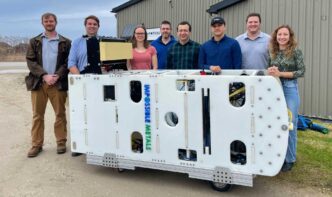Choosing the right AI coding tool can make or break your workflow—especially when you’re trying to write better code, build faster, and avoid setup headaches. In 2025, two platforms are making serious waves: Windsurf and Cursor.
Both are built for devs who want AI to do more than autocomplete. But they serve different goals, experience levels, and project types. So, which one should you use?
Let’s break it down clearly—without fluff.
What Are Windsurf and Cursor?
Windsurf, recently acquired by OpenAI in a $3B deal, is a full AI-powered IDE. It’s designed from the ground up with AI baked into every part of the development process. Tools like Cascade and Supercomplete aim to keep you focused—no tab switching, no wasted clicks.
Cursor, on the other hand, lives inside Visual Studio Code. It’s built for developers who already know their way around VS Code but want smarter tools. Features like Copilot++, Agent Mode, and Composer turn it into an AI-enhanced partner for real coding work—not just suggestions.
Ease of Use: Fast Start or Familiar Ground?
Windsurf is ideal for beginners or solo devs who want zero setup. It runs anywhere, even on low-power devices like Chromebooks, and requires no configuration. You type commands in plain English and get clean, context-aware results. It’s polished, intuitive, and keeps distractions minimal.
Cursor is built for developers already comfortable with VS Code. It imports your extensions, themes, and shortcuts in one click. While it’s powerful, it assumes a bit more technical know-how, especially when using deeper features like .cursorrules or Agent Mode.
Verdict:
- Use Windsurf if you want simplicity and a clean interface.
- Go with Cursor if you’re already a VS Code user and like working with tools you know.
AI Features and Productivity Boosters
Both tools have smart AI—but they use it differently.
Cursor gives you deep codebase control. Its Copilot++ handles multi-line predictions. The Composer feature helps with large-scale code edits, and Agent Mode can take on full development tasks across multiple files.
Windsurf favors flow and simplicity. Its Supercomplete adapts to where your cursor is, while Cascade automates complex tasks with minimal input. You can tell it to “add a login page” and it’ll do just that—no hand-holding required.
Verdict:
- Choose Cursor for structured projects, backend work, and multi-file logic.
- Pick Windsurf if you value speed, reduced friction, and a smoother build experience.
Performance, Scalability, and Price
Cursor runs locally, which means it needs decent hardware but gives you more control—especially on big codebases. Windsurf works more like a cloud app, so it’s lighter on resources and works well on modest setups.
When it comes to price:
- Windsurf starts at $15/month with a generous free tier.
- Cursor begins at $20/month, with fewer free features.
Verdict:
- Go with Cursor if you have the hardware and want power.
- Choose Windsurf if you’re just starting out, working solo, or trying to save on costs.
Real-World Fit: What’s Best for Your Project?
Use Cursor if:
- You’re an experienced dev who lives in VS Code.
- You’re building something big and need advanced tools.
- You want deep AI integration for serious development tasks.
Use Windsurf if:
- You’re prototyping, learning, or launching solo.
- You want an AI coding tool that’s intuitive and requires no setup.
- You prefer a lightweight, distraction-free experience.
Final Thoughts: The Best AI Coding Tool Depends on You
If you want full control and already have a setup around VS Code, Cursor is a powerful choice. It’s precise, customizable, and great for scaling complex apps.
If you’re moving fast, building solo, or just want something that works right out of the box, Windsurf will save you time and effort. It’s designed to feel helpful, not overwhelming.
Bottom line:
- Cursor = Power and control
- Windsurf = Speed and simplicity
Still not sure? Think about your current workflow, what you’re building, and how much time you want to spend setting up tools. That should make your choice clear.













